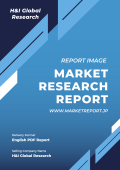1. Preface
1.1. Market Definition and Scope
1.2. Market Segmentation
1.3. Key Research Objectives
1.4. Research Highlights
2. Assumptions and Research Methodology
3. Executive Summary: Global Alzheimer’s Disease Biomarkers Market
4. Market Overview
4.1. Introduction
4.1.1. Definition
4.1.2. Industry Evolution / Developments
4.2. Overview
4.3. Market Dynamics
4.3.1. Drivers
4.3.2. Restraints
4.3.3. Opportunities
4.4. Global Alzheimer’s Disease Biomarkers Market Analysis and Forecast, 2017–2031
5. Key Insights
5.1. Key Mergers & Acquisitions
5.2. Pipeline Analysis
5.3. Disease Prevalence and Incidence Rate globally with key countries/ region
5.4. COVID-19 Impact Analysis
6. Global Alzheimer’s Disease Biomarkers Market Analysis and Forecast, by Type of Biomarker
6.1. Introduction & Definition
6.2. Key Findings / Developments
6.3. Market Value Forecast, by Type of Biomarker, 2017–2031
6.3.1. CSF Biomarkers
6.3.1.1. Amyloid Beta
6.3.1.2. Tau Protein
6.3.1.3. Others
6.3.2. Genetic Biomarkers
6.3.2.1. Apolipoprotein E
6.3.2.2. Others
6.3.3. Blood Biomarkers
6.4. Market Attractiveness Analysis, by Type of Biomarker
7. Global Alzheimer’s Disease Biomarkers Market Analysis and Forecast, by Detection Technique
7.1. Introduction & Definition
7.2. Key Findings / Developments
7.3. Market Value Forecast, by Detection Technique, 2017–2031
7.3.1. Molecular Diagnostics
7.3.2. Immunoassays
7.4. Market Attractiveness Analysis, by Detection Technique
8. Global Alzheimer’s Disease Biomarkers Market Analysis and Forecast, by End-user
8.1. Introduction & Definition
8.2. Key Findings / Developments
8.3. Market Value Forecast, by End-user, 2017–2031
8.3.1. Hospitals & Clinics
8.3.2. Diagnostic Laboratories
8.3.3. Others
8.4. Market Attractiveness Analysis, by End-user
9. Global Alzheimer’s Disease Biomarkers Market Analysis and Forecast, by Region
9.1. Key Findings
9.2. Market Value Forecast, by Region
9.2.1. North America
9.2.2. Europe
9.2.3. Asia Pacific
9.2.4. Rest of the World
9.3. Market Attractiveness Analysis, by Region
10. North America Alzheimer’s Disease Biomarkers Market Analysis and Forecast
10.1. Introduction
10.1.1. Key Findings
10.2. Market Value Forecast, by Type of Biomarker, 2017–2031
10.2.1. CSF Biomarkers
10.2.1.1. Amyloid Beta
10.2.1.2. Tau Protein
10.2.1.3. Others
10.2.2. Genetic Biomarkers
10.2.2.1. Apolipoprotein E
10.2.2.2. Others
10.2.3. Blood Biomarkers
10.3. Market Value Forecast, by Detection Technique, 2017–2031
10.3.1. Molecular Diagnostics
10.3.2. Immunoassays
10.4. Market Value Forecast, by End-user, 2017–2031
10.4.1. Hospitals & Clinics
10.4.2. Diagnostic Laboratories
10.4.3. Others
10.5. Market Value Forecast, by Country, 2017–2031
10.5.1. U.S.
10.5.2. Canada
10.6. Market Attractiveness Analysis
10.6.1. By Type of Biomarker
10.6.2. By Detection Technique
10.6.3. By End-user
10.6.4. By Country
11. Europe Alzheimer’s Disease Biomarkers Market Analysis and Forecast
11.1. Introduction
11.1.1. Key Findings
11.2. Market Value Forecast, by Type of Biomarker, 2017–2031
11.2.1. CSF Biomarkers
11.2.1.1. Amyloid Beta
11.2.1.2. Tau Protein
11.2.1.3. Others
11.2.2. Genetic Biomarkers
11.2.2.1. Apolipoprotein E
11.2.2.2. Others
11.2.3. Blood Biomarkers
11.3. Market Value Forecast, by Detection Technique, 2017–2031
11.3.1. Molecular Diagnostics
11.3.2. Immunoassays
11.4. Market Value Forecast, by End-user, 2017–2031
11.4.1. Hospitals & Clinics
11.4.2. Diagnostic Laboratories
11.4.3. Others
11.5. Market Value Forecast, by Country/Sub-region, 2017–2031
11.5.1. Germany
11.5.2. U.K.
11.5.3. France
11.5.4. Italy
11.5.5. Spain
11.5.6. Rest of Europe
11.6. Market Attractiveness Analysis
11.6.1. By Type of Biomarker
11.6.2. By Detection Technique
11.6.3. By End-user
11.6.4. By Country/Sub-region
12. Asia Pacific Alzheimer’s Disease Biomarkers Market Analysis and Forecast
12.1. Introduction
12.1.1. Key Findings
12.2. Market Value Forecast, by Type of Biomarker, 2017–2031
12.2.1. CSF Biomarkers
12.2.1.1. Amyloid Beta
12.2.1.2. Tau Protein
12.2.1.3. Others
12.2.2. Genetic Biomarkers
12.2.2.1. Apolipoprotein E
12.2.2.2. Others
12.2.3. Blood Biomarkers
12.3. Market Value Forecast, by Detection Technique, 2017–2031
12.3.1. Molecular Diagnostics
12.3.2. Immunoassays
12.4. Market Value Forecast, by End-user, 2017–2031
12.4.1. Hospitals & Clinics
12.4.2. Diagnostic Laboratories
12.4.3. Others
12.5. Market Value Forecast, by Country/Sub-region, 2017–2031
12.5.1. China
12.5.2. Japan
12.5.3. India
12.5.4. Australia & New Zealand
12.5.5. Rest of Asia Pacific
12.6. Market Attractiveness Analysis
12.6.1. By Type of Biomarker
12.6.2. By Detection Technique
12.6.3. By End-user
12.6.4. By Country/Sub-region
13. Rest of the World Alzheimer’s Disease Biomarkers Market Analysis and Forecast
13.1. Introduction
13.1.1. Key Findings
13.2. Market Value Forecast, by Type of Biomarker, 2017–2031
13.2.1. CSF Biomarkers
13.2.1.1. Amyloid Beta
13.2.1.2. Tau Protein
13.2.1.3. Others
13.2.2. Genetic Biomarkers
13.2.2.1. Apolipoprotein E
13.2.2.2. Others
13.2.3. Blood Biomarkers
13.3. Market Value Forecast, by Detection Technique, 2017–2031
13.3.1. Molecular Diagnostics
13.3.2. Immunoassays
13.4. Market Value Forecast, by End-user, 2017–2031
13.4.1. Hospitals & Clinics
13.4.2. Diagnostic Laboratories
13.4.3. Others
13.5. Market Attractiveness Analysis
13.5.1. By Type of Biomarker
13.5.2. By Detection Technique
13.5.3. By End-user
14. Competition Landscape
14.1. Market Player – Competition Matrix (by tier and size of companies)
14.2. Company Profiles
14.2.1. Enzo Life Sciences, Inc.
14.2.1.1. Company Overview (HQ, Business Segments, Employee Strength)
14.2.1.2. Product Portfolio
14.2.1.3. Financial Overview
14.2.1.4. Strategic Overview
14.2.1.5. SWOT Analysis
14.2.2. Thermo Fisher Scientific, Inc.
14.2.2.1. Company Overview (HQ, Business Segments, Employee Strength)
14.2.2.2. Product Portfolio
14.2.2.3. Strategic Overview
14.2.2.4. SWOT Analysis
14.2.3. AnaSpec, Inc.
14.2.3.1. Company Overview (HQ, Business Segments, Employee Strength)
14.2.3.2. Product Portfolio
14.2.3.3. Strategic Overview
14.2.3.4. SWOT Analysis
14.2.4. Merck KGaA
14.2.4.1. Company Overview (HQ, Business Segments, Employee Strength)
14.2.4.2. Product Portfolio
14.2.4.3. Strategic Overview
14.2.4.4. SWOT Analysis
14.2.5. Cell Signaling Technology, Inc.
14.2.5.1. Company Overview (HQ, Business Segments, Employee Strength)
14.2.5.2. Product Portfolio
14.2.5.3. Strategic Overview
14.2.5.4. SWOT Analysis
14.2.6. Fujirebio
14.2.6.1. Company Overview (HQ, Business Segments, Employee Strength)
14.2.6.2. Product Portfolio
14.2.6.3. Strategic Overview
14.2.6.4. SWOT Analysis
14.2.7. Imagilys
14.2.7.1. Company Overview (HQ, Business Segments, Employee Strength)
14.2.7.2. Product Portfolio
14.2.7.3. Strategic Overview
14.2.7.4. SWOT Analysis
14.2.8. NanoSomiX
14.2.8.1. Company Overview (HQ, Business Segments, Employee Strength)
14.2.8.2. Product Portfolio
14.2.8.3. Strategic Overview
14.2.8.4. SWOT Analysis
14.2.9. QIAGEN
14.2.9.1. Company Overview (HQ, Business Segments, Employee Strength)
14.2.9.2. Product Portfolio
14.2.9.3. Strategic Overview
14.2.9.4. SWOT Analysis
14.2.10. 23andMe, Inc.
14.2.10.1. Company Overview (HQ, Business Segments, Employee Strength)
14.2.10.2. Product Portfolio
14.2.10.3. Strategic Overview
14.2.10.4. SWOT Analysis
14.2.11. Quanterix
14.2.11.1. Company Overview (HQ, Business Segments, Employee Strength)
14.2.11.2. Product Portfolio
14.2.11.3. Strategic Overview
14.2.11.4. SWOT Analysis
14.2.12. C2N Diagnostics
14.2.12.1. Company Overview (HQ, Business Segments, Employee Strength)
14.2.12.2. Product Portfolio
14.2.12.3. Strategic Overview
14.2.12.4. SWOT Analysis
14.2.13. Quest Diagnostics
14.2.13.1. Company Overview (HQ, Business Segments, Employee Strength)
14.2.13.2. Product Portfolio
14.2.13.3. Strategic Overview
*** 免責事項 ***
https://www.globalresearch.co.jp/disclaimer/











